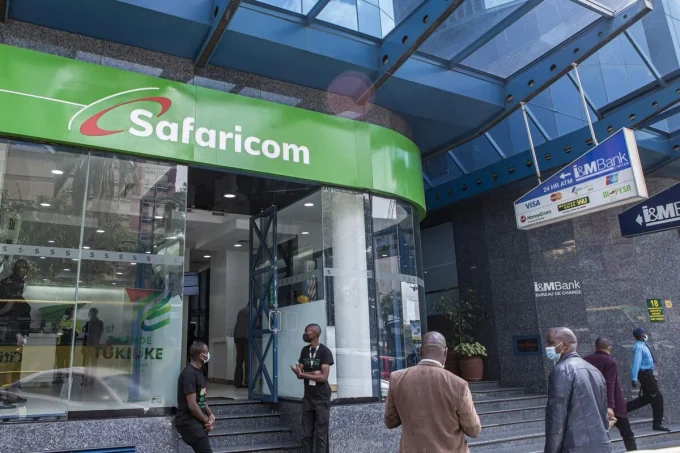The emergence of Bitcoin as a feasible asset elegance has attracted increasing interest from institutional buyers, marking a sizable shift in the conventional finance panorama. Once taken into consideration with skepticism, Bitcoin is now gaining attractiveness and recognition as a legitimate investment vehicle among Wall Street’s most tremendous gamers.
In this article, we delve into the elements riding the upward push of institutional investment in Bitcoin, the outcomes for the cryptocurrency marketplace, and the transformative outcomes in a broader monetary environment. For more detailed information, visit the site.
Understanding Institutional Investment in Bitcoin
Maturing Market Infrastructure
The maturation of Bitcoin market infrastructure, including the development of regulated exchanges, custodial services, and institutional-grade trading systems, has laid the basis for institutional funding in Bitcoin. Established financial establishments and investment corporations now have access to robust infrastructure and tools that permit them to buy, promote, and custody Bitcoin securely and efficiently, facilitating more participation inside the cryptocurrency market.
Growing Institutional Demand
Institutional demand for Bitcoin is on the rise, driven by elements that consist of the growing popularity of Bitcoin as a store of fees, developing recognition among mainstream investors, and the desire for portfolio diversification. Institutional shoppers, together with hedge price ranges, asset managers, and family workplaces, are allocating capital to Bitcoin as a part of their funding strategies if you want to capture capability returns and hedge in competition to inflationary pressures in conventional asset instructions.
Hedge Against Economic Uncertainty
Bitcoin’s emergence as a hedge in competition with economic uncertainty and forex devaluation has resonated with institutional traders seeking to defend their portfolios from macroeconomic risks. With important banks worldwide adopting expansionary monetary guidelines and remarkable tiers of financial stimulus being injected into the economy, concerns about inflation and forex debasement are using institutional demand for Bitcoin as a steady-haven asset and shop of value.
Implications for the Cryptocurrency Market
Price Discovery and Liquidity
The inflow of institutional capital into the Bitcoin market has delivered approximately stepped-ahead price discovery and liquidity, reducing volatility and improving marketplace performance. Institutional traders deliver extra liquidity and intensity to the marketplace, making it less complicated for retail shoppers and traders to buy and sell Bitcoin at competitive expenses, thereby increasing marketplace stability and reducing spreads.
Mainstream Adoption and Legitimization
The participation of institutional traders within the Bitcoin marketplace lends legitimacy and credibility to the cryptocurrency asset class, driving mainstream adoption and popularity. As renowned economic institutions and groups publicly divulge their investments in Bitcoin, it complements Bitcoin’s reputation as a legitimate and viable investment alternative, paving the way for extra institutional adoption and integration into conventional finance.
Regulatory Scrutiny and Oversight
The growing presence of institutional buyers in the Bitcoin marketplace has led regulators to increase their scrutiny and oversight of cryptocurrency-associated activities. Regulators are specializing in areas that consist of investor protection, market integrity, and anti-cash laundering compliance to ensure the orderly functioning of the cryptocurrency marketplace and mitigate systemic dangers associated with institutional funding in Bitcoin.
Challenges and Considerations
Regulatory Uncertainty
Regulatory uncertainty remains a sizeable project for institutional traders navigating the cryptocurrency panorama. The regulatory framework for cryptocurrencies remains evolving, with regulators globally grappling with a way to alter this rising asset class. Institutional shoppers must stay abreast of regulatory tendencies and compliance requirements to mitigate regulatory dangers and ensure jail compliance.
Custody and Security
Custody and safety are paramount worries for institutional traders holding Bitcoin. The custody of digital property offers specific traumatic conditions as compared to conventional assets, requiring robust protection features and infrastructure to defend against theft, hacking, and other safety threats.
Market Volatility and Risk Management
Despite Bitcoin’s capability for high returns, it is also vulnerable to vast rate volatility and market fluctuations. Institutional investors need to implement sturdy threat control techniques to mitigate the impact of marketplace volatility on their portfolios. This may also include diversification, hedging techniques, and the use of derivatives to control danger exposure effectively.
Conclusion
The upward push of institutional investment in Bitcoin represents a paradigm shift inside the economic landscape, with Wall Street’s embodiment of cryptocurrency signaling a cutting-edge generation of mainstream adoption and recognition. As institutional buyers keep allocating capital to Bitcoin, the cryptocurrency marketplace is poised for boom and maturation, with implications for fee discovery, liquidity, and regulatory oversight.
While demanding situations such as regulatory uncertainty and protection worries persist, the transformative consequences of institutional funding on Bitcoin’s trajectory are clear, shaping the future of finance and funding in the digital age.
> Investing in Bitcoin: A Beginners Guide to Cryptocurrency













Leave a comment